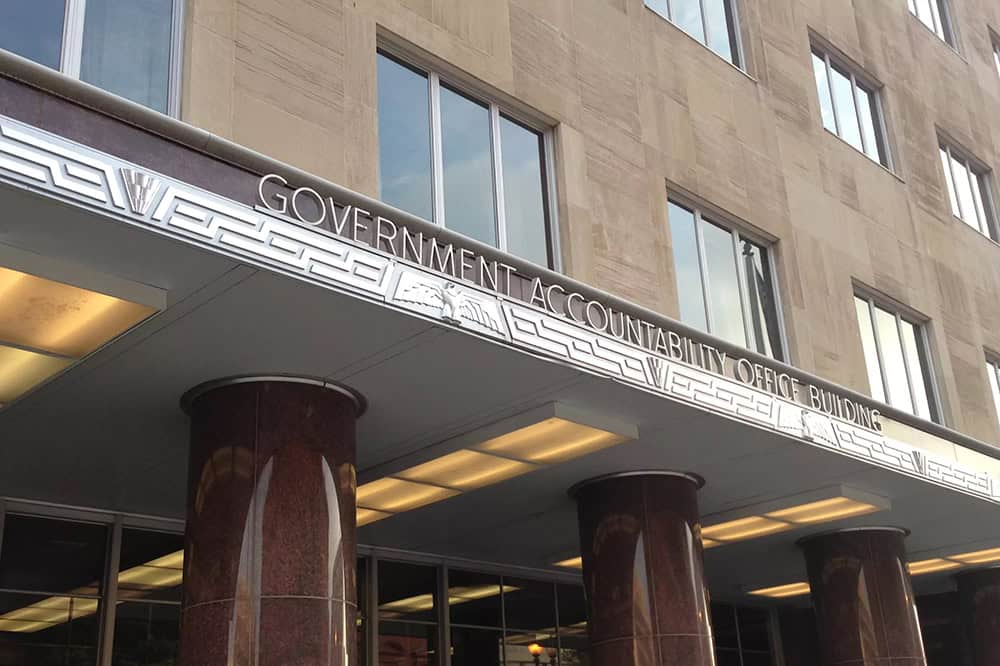100 Days from Election, Democrats and Republicans Overwhelmingly Call for More Discussion of National Debt
More than 9-in-10 Voters Prefer Candidates with a Plan to Address the Debt
U.S. Fiscal Confidence is 48 in July (100 is neutral)
With less than 100 days until Election Day and the national debt soaring past $35 trillion, a new national poll finds Democratic and Republican voters want to hear more about addressing the national debt and support candidates who have a plan to put our nation on a more sustainable fiscal path.
A new Peter G. Peterson Foundation survey finds that 93% of Democrat voters and 98% of Republican voters will choose a presidential candidate with a plan to address the debt over one without a plan (95% overall). Those results are similar when it comes to Congressional candidates.
Nearly 80% of voters want presidential candidates to communicate more about solutions for the rising national debt (79% more, compared to 3% less). Three-in-four voters are urging Congressional candidates to discuss solutions to the debt more (compared to 4% less), with 40% of voters reporting that they’ve heard no plans to address the debt from Congressional hopefuls.
More broadly, the U.S. Fiscal Confidence Index in July was 48 (100 is neutral), with 79% of voters saying their concern about the rising debt and failure to deal with it has increased, up one point from last month.
“As we approach the final months of the election campaign, voters want to hear more from their candidates about solutions for the $35 trillion and growing national debt,” said Michael A. Peterson, CEO of the nonpartisan Peterson Foundation. “The debt is the one issue where more than nine-in-ten Democratic and Republican voters agree that they want candidates to share plans to stabilize the debt. Between now and the election, we will add $1 trillion more to the debt and 2025 brings several major fiscal decisions, so now is the time for a serious and sustained national conversation about solutions.”
Last week, the Peterson Foundation released Solutions Initiative 2024, with seven leading think tanks across the ideological spectrum proposing more than 200 policy recommendations to stabilize our debt.
The Fiscal Confidence Index measures public opinion about the national debt by asking six questions in three key areas:
- CONCERN: Level of concern and views about the direction of the national debt.
- PRIORITY: How high a priority addressing the debt should be for elected leaders.
- EXPECTATIONS: Expectations about whether the debt situation will get better or worse in the next few years.
The survey results from these three areas are weighted equally and averaged to produce the Fiscal Confidence Index value. The Fiscal Confidence Index, like the Consumer Confidence Index, is indexed on a scale of 0 to 200, with a neutral midpoint of 100. A reading above 100 indicates positive sentiment. A reading below 100 indicates negative sentiment.
Fiscal Confidence Index Key Data Points:
- The July 2024 Fiscal Confidence Index value is 48. (The June value was 40. The May value was 36.)
- The current Fiscal Confidence Index score for CONCERN about the debt is 34, indicating deep concern about the debt. The score for debt as a PRIORITY that leaders must address is 26, indicating that Americans want elected leaders to make addressing long-term debt a high priority. The score for EXPECTATIONS about progress on the debt is 83. The Fiscal Confidence Index is the average of these three sub-category scores.
- For a description of the complete methodology, see the Appendix below.
The Peter G. Peterson Foundation commissioned this poll by the Global Strategy Group and North Star Opinion Research to survey public opinion on the national debt. The online poll surveyed 1,009 registered voters nationwide between July 22 and 24. It has a margin of error of +/- 3.1%.
Detailed poll results can be found online at: www.pgpf.org/FiscalConfidenceIndex.
About the Peter G. Peterson Foundation
The Peter G. Peterson Foundation is a nonprofit, nonpartisan organization that is dedicated to increasing public awareness of the nature and urgency of key fiscal challenges threatening America’s future, and to accelerating action on them. To address these challenges successfully, we work to bring Americans together to find and implement sensible, long-term solutions that transcend age, party lines and ideological divides in order to achieve real results. To learn more, please visit www.pgpf.org.
APPENDIX: Fiscal Confidence Index Methodology and Questions
- The Fiscal Confidence Index is released monthly by the Peter G. Peterson Foundation.
- The Fiscal Confidence Index value is based on six questions in three categories.
- As is done with the Consumer Confidence Index, the first step in calculating the Fiscal Confidence Index is determining the “Relative Value” for each question. This calculation is made by taking the positive response for each question and dividing it by the sum of the positive and negative responses. Each question was asked on a four-point scale, and answers were weighted according to intensity, with the strongest responses counting twice as much as the middle responses (“much” better or worse answers count twice as heavily as “somewhat” better or worse answers).
- The scores for the Concern, Priority, and Expectations categories are determined by averaging the scores derived from the two questions in each category.
- The Fiscal Confidence Index value is converted from the Relative Value to place it on a scale on which 100 indicates equal positive and negative sentiment, while values below 100 indicate negative sentiment and values above 100 indicate positive sentiment.
- The questions are as follows:
| CONCERN (34) | |||
|---|---|---|---|
| Thinking about our national debt over the last few years, would you say your level of concern has increased or decreased? ◊ Is that a lot or just a little? |
July 2024 | June 2024 | May 2024 |
| Increased a lot | 52% | 49% | 52% |
| Increased a little | 27% | 29% | 30% |
| Decreased a little | 5% | 6% | 3% |
| Decreased a lot | 3% | 3% | 2% |
| (No change) | 10% | 10% | 9% |
| (Don’t Know/Refused) | 4% | 3% | 3% |
| INCREASED (NET) | 79% | 78% | 82% |
| DECREASED (NET) | 7% | 9% | 5% |
| When it comes to addressing our national debt, would you say things in the United States are heading in the right direction or do you think things are off on the wrong track? ◊ Do you feel that way strongly or just somewhat? |
July 2024 | June 2024 | May 2024 |
| Right direction — Strongly | 9% | 7% | 7% |
| Right direction — Somewhat | 20% | 19% | 19% |
| Wrong track — Somewhat | 28% | 27% | 25% |
| Wrong track — Strongly | 37% | 43% | 45% |
| (Neither/Mixed) | 1% | 1% | 1% |
| (Don’t Know/Refused) | 5% | 3% | 3% |
| RIGHT DIRECTION (NET) | 29% | 26% | 26% |
| WRONG TRACK (NET) | 65% | 71% | 70% |
| PRIORITY (26) | |||
|---|---|---|---|
| Some people say that addressing the national debt should be among the president and Congress’ top 3 priorities. Do you agree or disagree? ◊ Do you feel that way strongly or just somewhat? |
July 2024 | June 2024 | May 2024 |
| Strongly agree | 50% | 51% | 54% |
| Somewhat agree | 24% | 25% | 24% |
| Somewhat disagree | 16% | 14% | 15% |
| Strongly disagree | 5% | 5% | 4% |
| (Don’t Know/Refused) | 6% | 5% | 4% |
| AGREE (NET) | 74% | 76% | 77% |
| DISAGREE (NET) | 20% | 19% | 19% |
| And when it comes to our national debt, do you think it is an issue that the president and Congress should spend more time addressing or less time addressing? ◊ Would you say a lot (more or less) time or just a little? |
July 2024 | June 2024 | May 2024 |
| A lot more time | 47% | 54% | 54% |
| A little more time | 36% | 29% | 30% |
| A little less time | 6% | 6% | 5% |
| A lot less time | 4% | 4% | 4% |
| (The same amount of time) | 3% | 2% | 3% |
| (Don’t Know/Refused) | 5% | 5% | 4% |
| MORE TIME (NET) | 83% | 83% | 84% |
| LESS TIME (NET) | 9% | 10% | 9% |
| EXPECTATIONS (83) | |||
|---|---|---|---|
| And thinking about our national debt over the next few years, do you expect the problem to get better or worse? ◊ Is that much (better or worse) or just somewhat (better or worse)? |
July 2024 | June 2024 | May 2024 |
| Much better | 9% | 7% | 6% |
| Somewhat better | 25% | 21% | 19% |
| Somewhat worse | 31% | 31% | 32% |
| Much worse | 25% | 34% | 35% |
| (No change) | 3% | 2% | 3% |
| (Don’t know/Refused) | 8% | 5% | 5% |
| BETTER (NET) | 33% | 28% | 25% |
| WORSE (NET) | 56% | 65% | 67% |
| And when it comes to our national debt, are you optimistic or pessimistic that the United States will be able to make progress on our national debt over the next few years? ◊ Would you say you are very (optimistic or pessimistic) or just somewhat? |
July 2024 | June 2024 | May 2024 |
| Very optimistic | 7% | 7% | 4% |
| Somewhat optimistic | 41% | 32% | 34% |
| Somewhat pessimistic | 34% | 36% | 37% |
| Very pessimistic | 12% | 20% | 19% |
| (Neither/Mixed) | 3% | 1% | 2% |
| (Don’t Know/Refused) | 4% | 4% | 4% |
| OPTIMISTIC (NET) | 47% | 39% | 38% |
| PESSIMISTIC (NET) | 46% | 56% | 56% |
###
ABOUT THE PETER G. PETERSON FOUNDATION
The Peter G. Peterson Foundation is a nonprofit, nonpartisan organization that is dedicated to increasing public awareness of the nature and urgency of key fiscal challenges threatening America's future, and to accelerating action on them. To address these challenges successfully, we work to bring Americans together to find and implement sensible, long-term solutions that transcend age, party lines and ideological divides in order to achieve real results. To learn more, please visit www.pgpf.org.
Further Reading
Growing National Debt Sets Off Alarm Bells for U.S. Business Leaders
Debt rising unsustainably threatens the country’s economic future, and a number of business leaders have signaled their concern.
How Much Can the Administration Really Save by Cutting Down on Improper Payments?
Cutting down on improper payments could increase program efficiency, bolster Americans’ confidence in their government, and safeguard taxpayer dollars.
What Is R Versus G and Why Does It Matter for the National Debt?
The combination of higher debt levels and elevated interest rates have increased the cost of federal borrowing, prompting economists to consider the sustainability of our fiscal trajectory.


